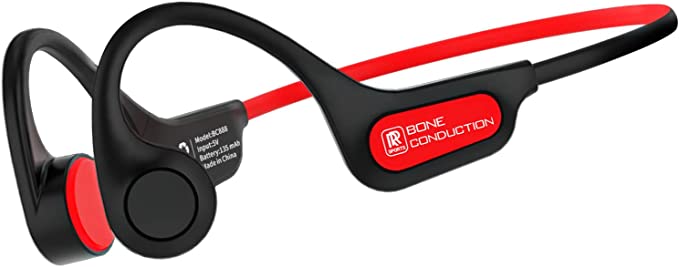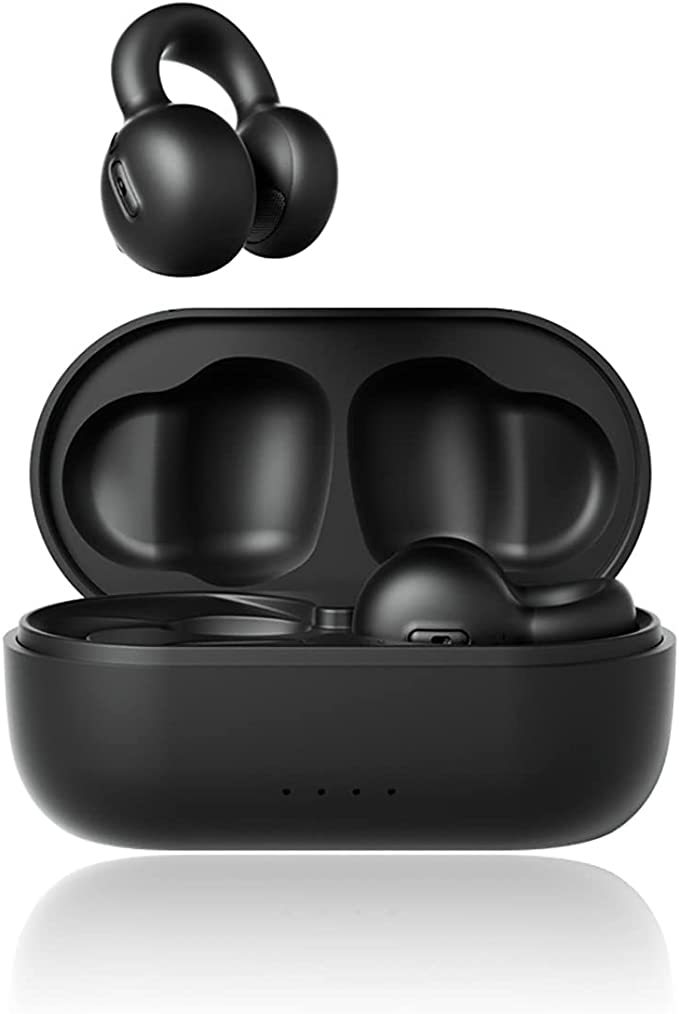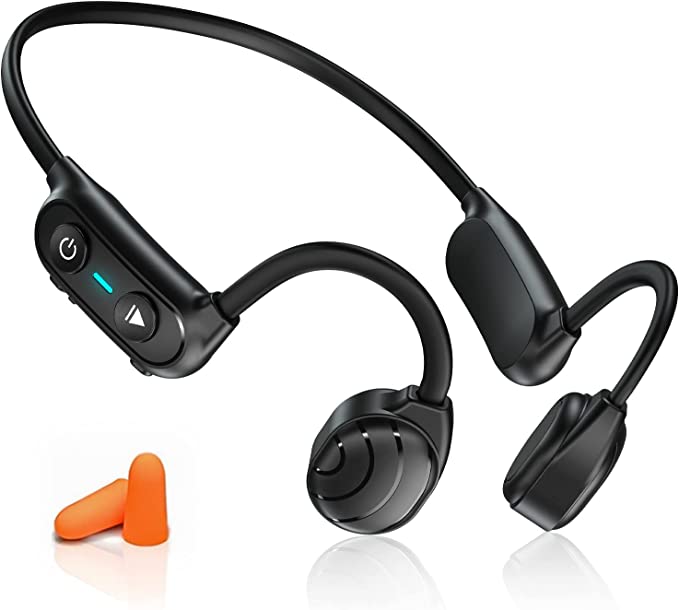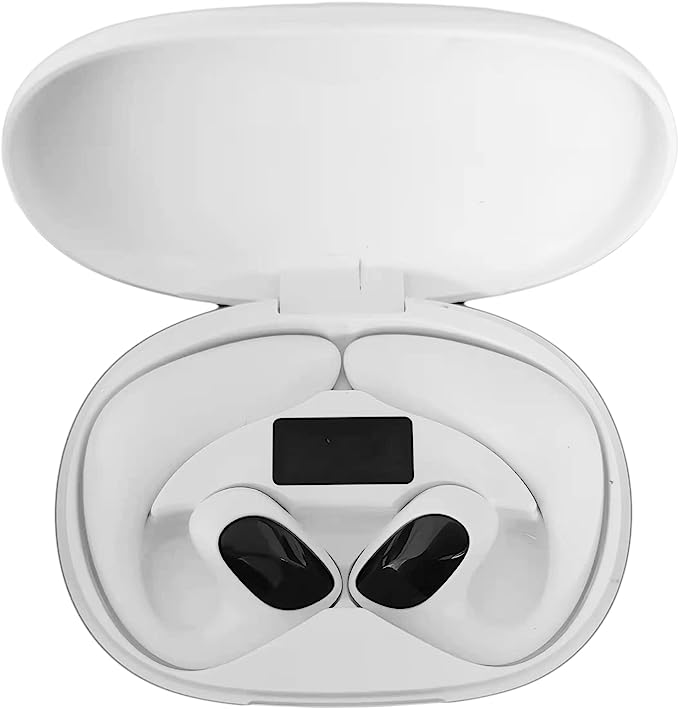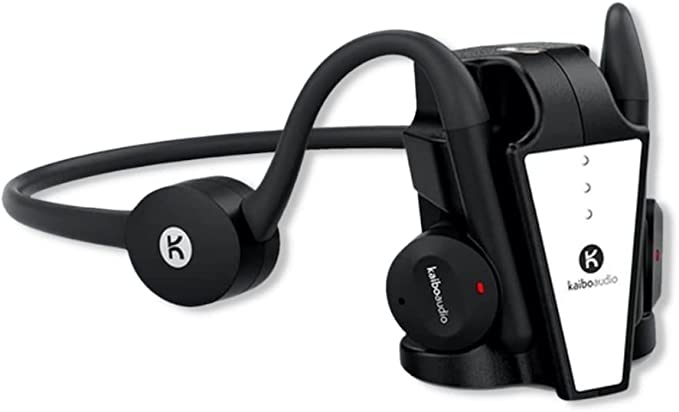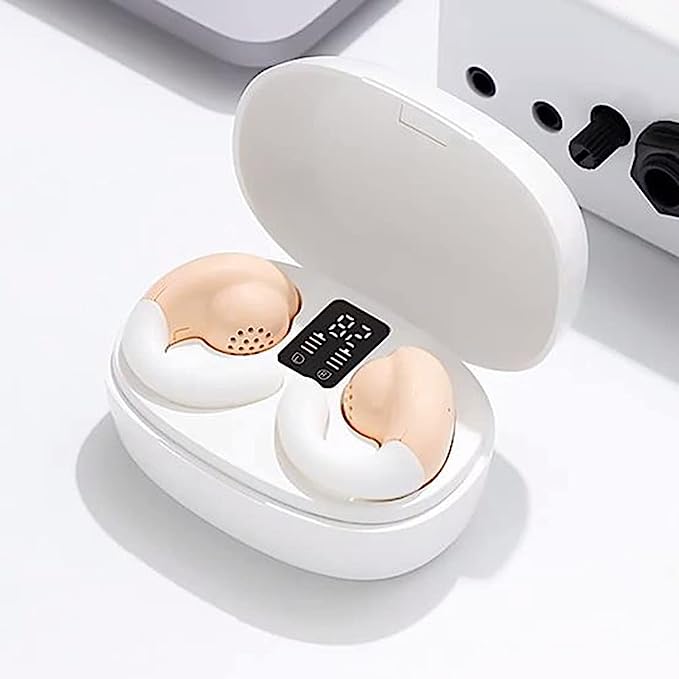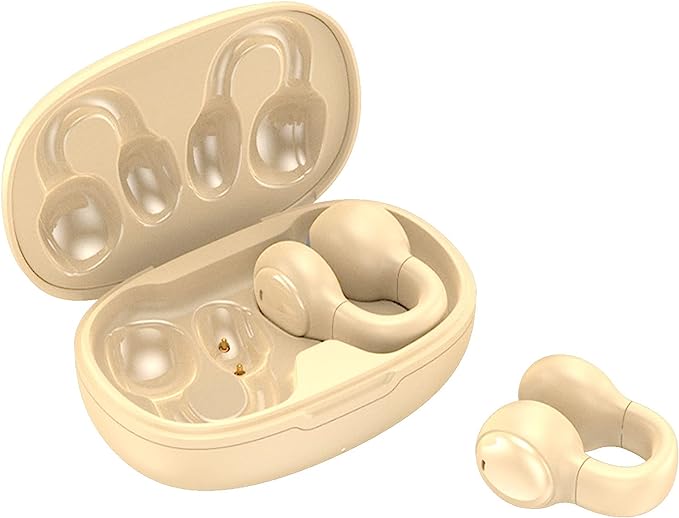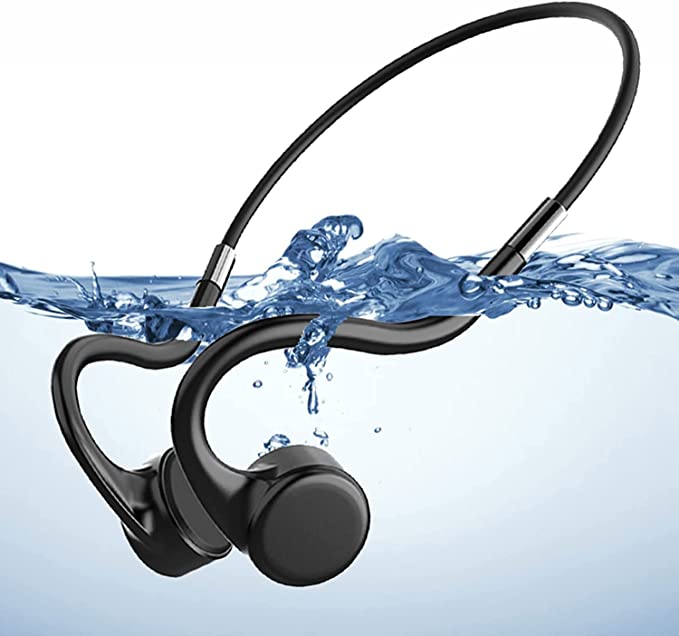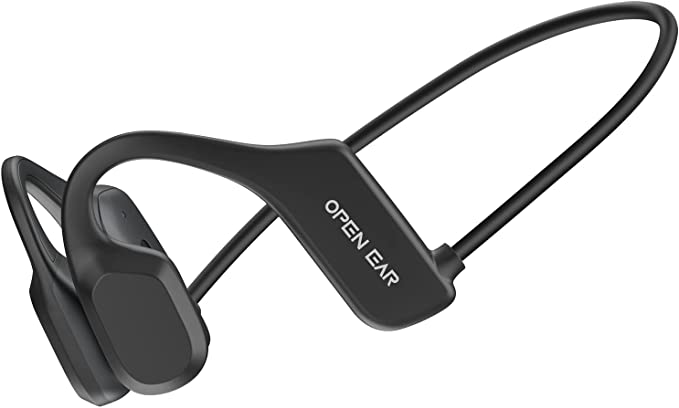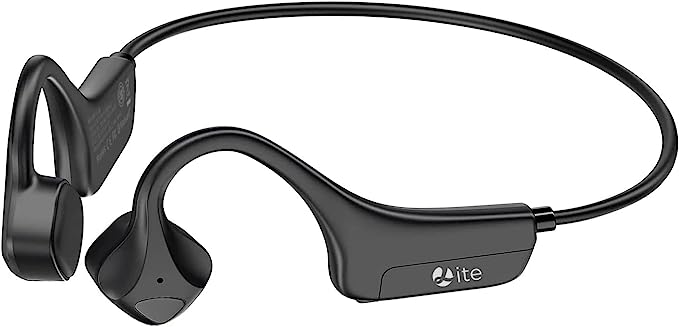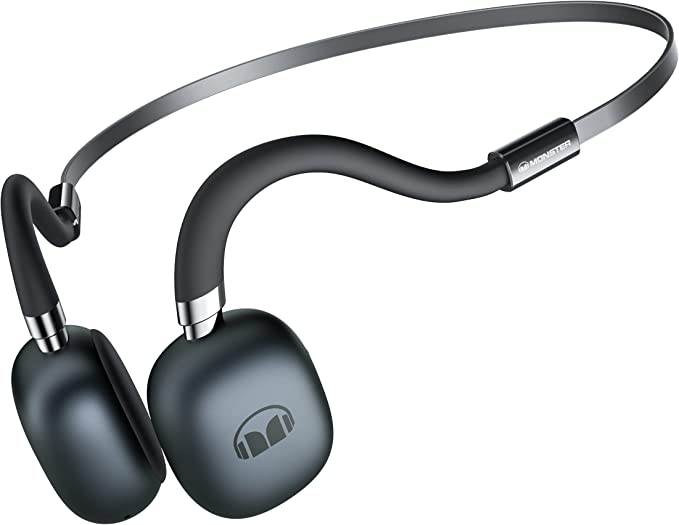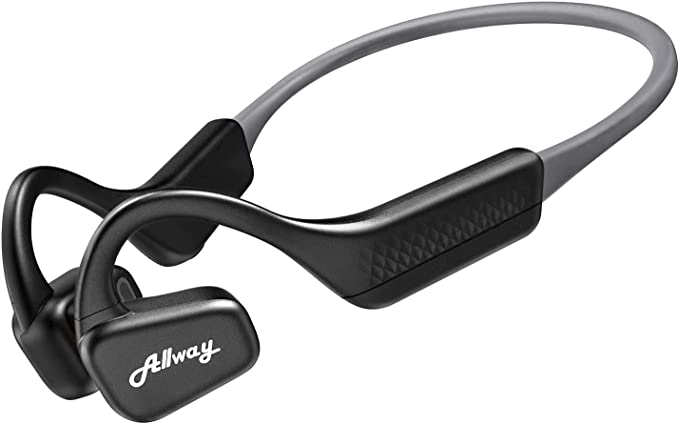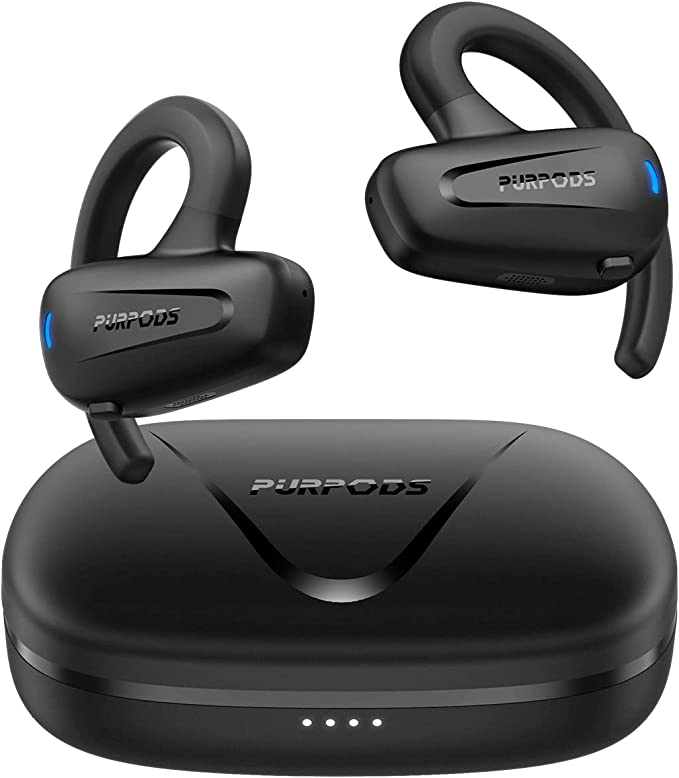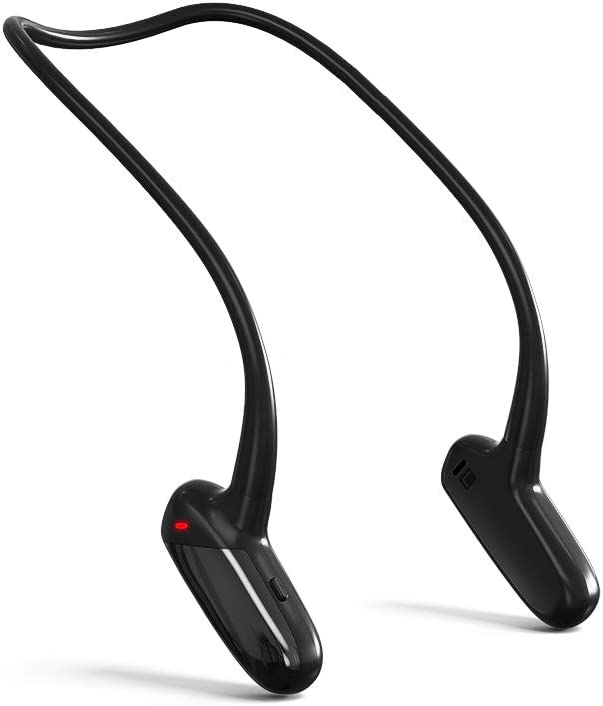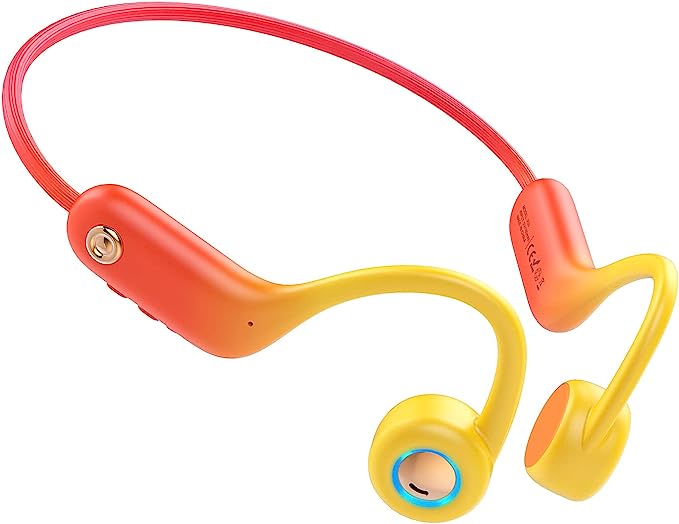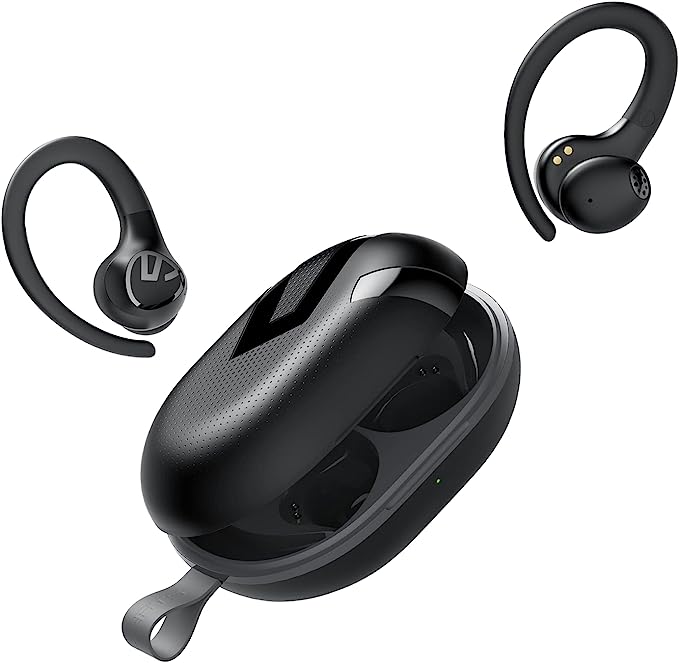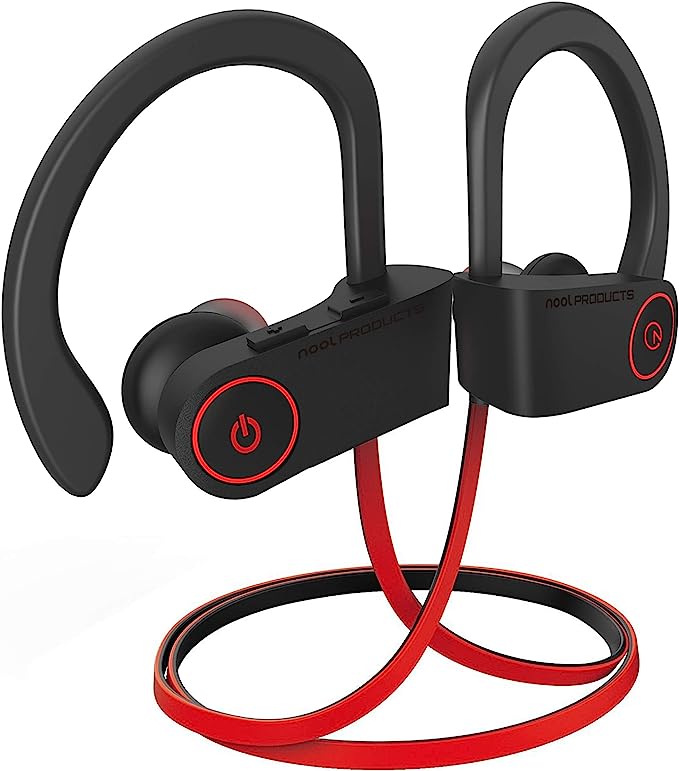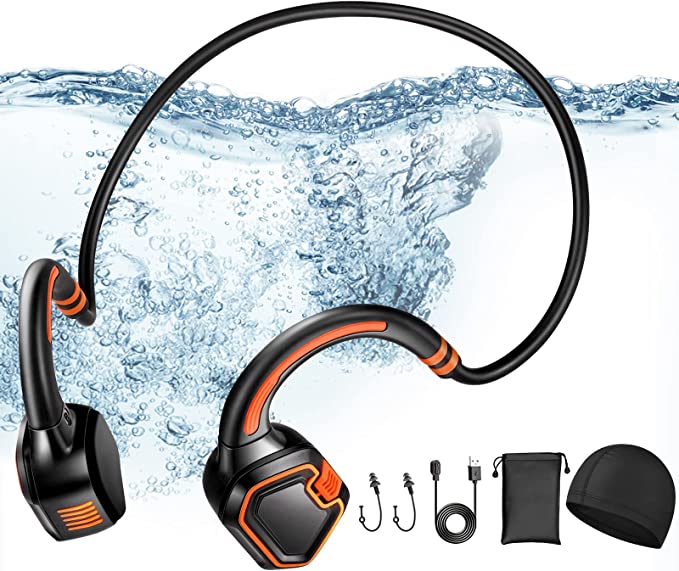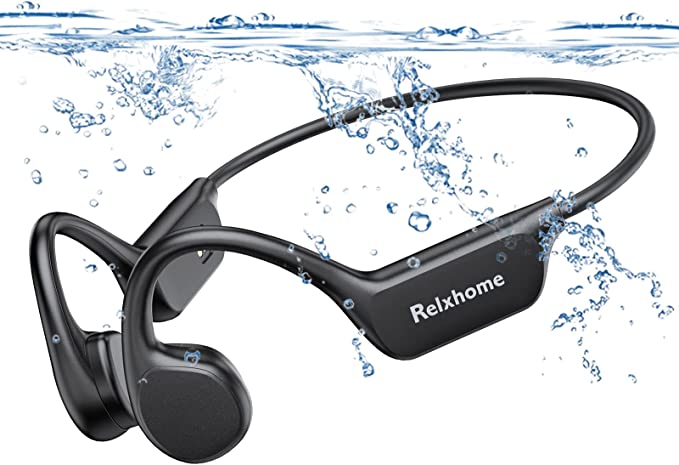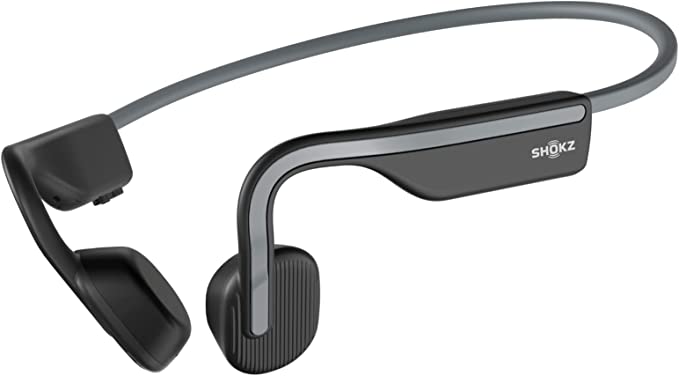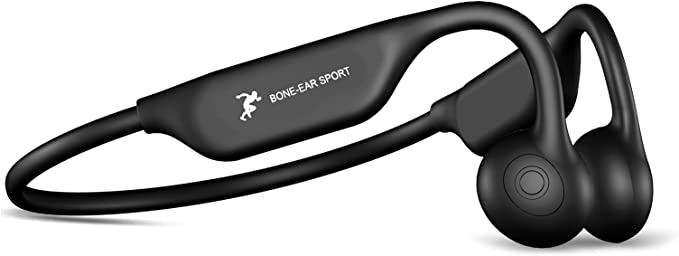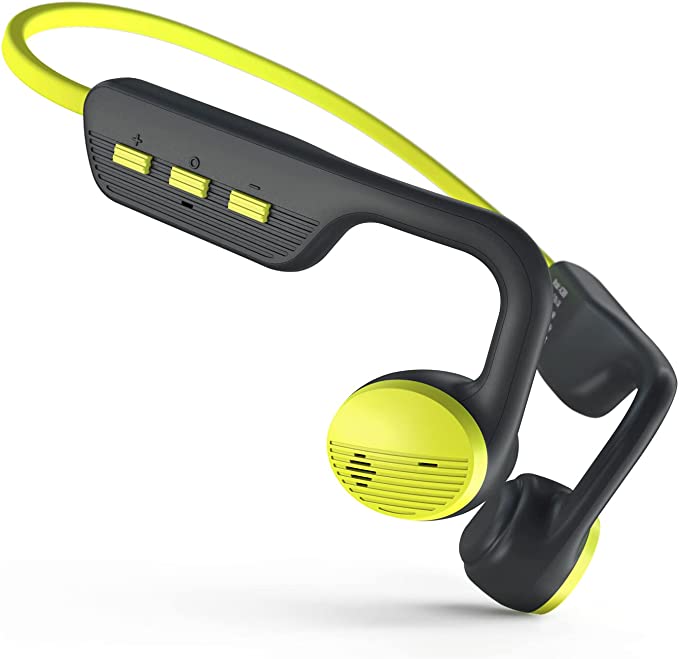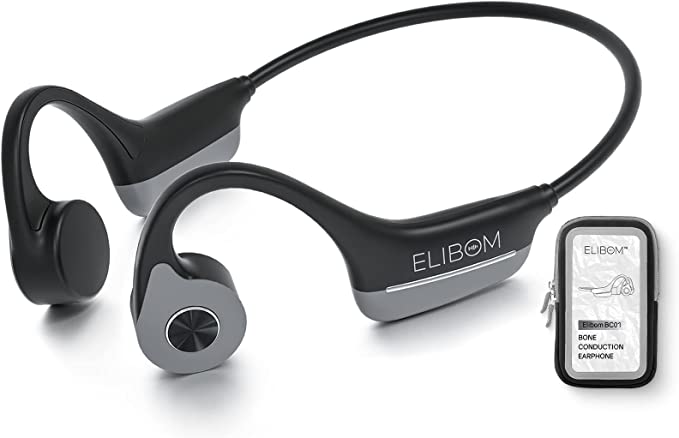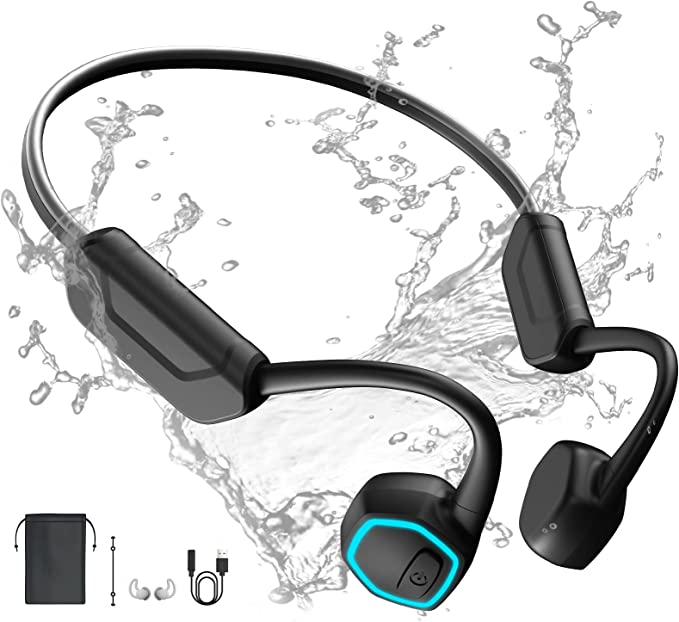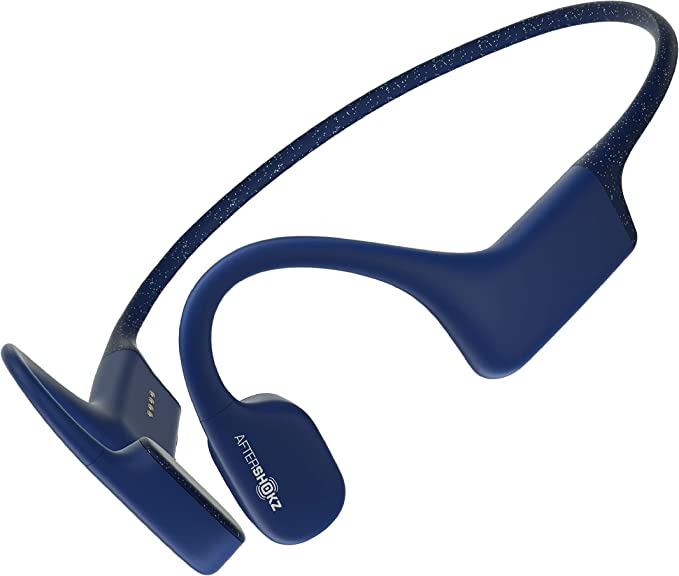Klatre LS1 Open-Ear Bone Conduction Headphones: A Safe and Comfortable Choice for Outdoor Sports
Update on June 25, 2025, 8:50 a.m.
Sound. It’s the whisper of wind through leaves, the laughter of a loved one, the soaring crescendo of an orchestra, the vital warning siren in a bustling street. Our ability to hear shapes our experience of the world in profound ways. Yet, in our quest to carry our personal soundscapes with us – for motivation during a run, focus in a noisy office, or entertainment on a long commute – we’ve often found ourselves at a crossroads, a delicate balance between immersive audio and the crucial connection to our surroundings, not to mention the long-term health of our ears. Traditional headphones, whether sealing our ear canals or cupping our entire ear, can create a sense of isolation and, over time, pose risks. But what if there was a way to hear differently? A way to enjoy rich audio while keeping our ears open to the world and giving them the gentle care they deserve? This is the promise of bone conduction technology, and a compelling expression of it can be found in devices like the Klatre LS1 Open Ear Bone Conduction Headphones.

A Whisper Through Your Bones: Unpacking the Magic of Bone Conduction
The concept of hearing sound not through air vibrating our eardrums, but through the very bones of our skull, might seem like science fiction. Yet, it’s a phenomenon that has been understood, at least anecdotally, for centuries. Legend has it that composer Ludwig van Beethoven, as his hearing waned, would bite onto a rod connected to his piano to perceive the vibrations of his music. While perhaps apocryphal, this story touches upon the core principle of bone conduction.
So, how does it actually work? Imagine sound not as waves traveling down a tunnel (your ear canal) to knock on a door (your eardrum), but as a subtle, rhythmic tapping directly on the frame of the house itself. Bone conduction headphones, like the Klatre LS1, feature small transducers that rest gently on the temporal bones, typically just in front of the ears. When audio signals are sent to these transducers, they convert them into micro-vibrations. These vibrations travel through the skull bones directly to the cochlea, the snail-shaped, fluid-filled organ of the inner ear. Inside the cochlea, tiny hair cells are stimulated by these vibrations, just as they would be by vibrations passed along from the eardrum and middle ear bones in conventional hearing. These stimulated hair cells then send neural impulses to the brain, which interprets them as sound. Essentially, bone conduction provides an alternative auditory pathway, one that elegantly bypasses the outer and middle ear.

This alternative route is not just a novelty; it carries significant implications for ear health and comfort. Firstly, by leaving the ear canal entirely open, bone conduction headphones eliminate the pressure, discomfort, and potential for irritation or infection (like otitis externa, or swimmer’s ear) that can plague users of in-ear earbuds, especially with prolonged wear. Your ears can breathe, remaining clean and less prone to moisture build-up. Secondly, and perhaps more crucially for long-term hearing wellness, this method is gentler on the eardrum. While all sound, if loud enough for long enough, can pose a risk, bone conduction reduces the direct, concentrated acoustic energy aimed at the delicate tympanic membrane. This aligns with recommendations from organizations like the World Health Organization (WHO), which emphasize the importance of safe listening practices to prevent noise-induced hearing loss (NIHL). The Klatre LS1’s design, rooted in “true bone conduction,” is fundamentally about “long-lasting ear protection” by offering a less invasive, less directly impactful way to enjoy audio.

Enter Klatre LS1: Engineering Sound for Life in Motion
Understanding the science of bone conduction is key to appreciating how devices like the Klatre LS1 are engineered. They aren’t just about a novel way to transmit sound; they are about creating a holistic listening experience that prioritizes awareness, comfort, and performance, particularly for those with active lifestyles or a keen focus on well-being.
The Freedom of Open Ears: Staying Connected to Your World
One of the most immediate and profound benefits of the Klatre LS1’s bone conduction nature is its open-ear design. Because nothing is blocking or sealing your ear canal, you retain full, unimpeded auditory awareness of your surroundings. Think about the intricate way our brain processes sound: it’s constantly sifting through auditory cues, helping us locate sound sources, understand speech in a noisy room (the “cocktail party effect”), and, critically, detect potential hazards. Traditional headphones that isolate or actively cancel noise can significantly diminish this vital situational awareness.

For a runner navigating city streets, this means hearing an approaching bicycle bell or the rumble of a car. For a cyclist sharing the road, it’s about perceiving traffic patterns and other vehicles. Even in an office, an open-ear design allows you to hear a colleague calling your name or an important announcement without having to constantly remove your headphones. The Klatre LS1 facilitates this seamless integration of personal audio and environmental sound, enhancing safety and reducing the feeling of being cut off from your immediate world. It’s about being present in your audio and your environment.

The Embrace of Memory Alloy: Comfort That Remembers You
Long-term wearability hinges on comfort and a secure fit, especially during vigorous activity. The Klatre LS1 incorporates memory alloy material in its construction, a choice grounded in fascinating materials science. Memory alloys, such as Nickel-Titanium (often known by the trade name Nitinol), exhibit two remarkable properties: superelasticity (the ability to undergo large deformations and return to their original shape) and the shape memory effect (the ability to “remember” and return to a pre-set shape when heated, though in headphone applications, superelasticity at body temperature is key).
This means the Klatre LS1’s frame can be lightweight yet robust, flexing to accommodate different head sizes and shapes while exerting a gentle, consistent pressure that ensures a secure fit without uncomfortable clamping. The product information highlights its compatibility with glasses and hats, a common pain point with many over-ear or on-ear designs. Imagine finishing an hour-long run, sweaty and tired, but your headphones have stayed perfectly in place, causing no soreness or pressure points – that’s the ergonomic benefit that carefully chosen materials like memory alloy can deliver. This focus on a “secure fit without interfering” contributes significantly to user comfort, allowing you to focus on your activity, not on constantly readjusting your gear.
A Different Kind of Clarity: The Bone Conduction Soundscape
When Klatre mentions “Premium Sound Quality” via “unique technology,” it’s important to understand this within the context of bone conduction. The auditory experience is inherently different from air-conducted sound. Many users report that bone conduction excels in delivering clear vocals and distinct mid-range frequencies, making podcasts, audiobooks, and vocal-centric music particularly articulate. The sensation of bass is also unique – less of a thumping pressure in the ear canal and more of a resonant vibration that can be surprisingly satisfying.
One of the historical challenges with bone conduction has been “sound leakage” – where some of the vibrations dissipate as audible sound into the surrounding air. Klatre’s “unique technology” likely incorporates engineering refinements to the transducers or their housing to minimize this, ensuring a more private listening experience and more efficient sound delivery to the listener.
Furthermore, for clear communication, the Klatre LS1 is equipped with Dual ENC Mics. Environmental Noise Cancellation (ENC) in this context is a sophisticated microphone technology. Typically, in a dual-mic setup, one microphone is primarily focused on capturing the user’s voice, while the second microphone actively samples the ambient sounds from the environment. Clever algorithms then process these two audio streams, identifying and computationally subtracting or suppressing the unwanted background noise from the voice signal. This results in significantly clearer calls, even if you’re on a busy street, in a bustling café, or a windy park. It’s a practical application of signal processing that enhances the headset’s versatility beyond just music playback.
Built for the Journey: Durability and Power
An active lifestyle demands resilient gear. The Klatre LS1 is described as “Sweat Resistant & Waterproof.” While the specific IP (Ingress Protection) rating isn’t always front and center in marketing, the earlier draft’s mention of IP55 is a common and credible rating for sports headphones. According to the International Electrotechnical Commission’s (IEC) 60529 standard, an IP55 rating signifies that the device is protected against dust ingress (the first ‘5’ – limited ingress, no harmful deposit) and can withstand low-pressure water jets from any direction (the second ‘5’). This translates to peace of mind when you’re caught in light rain or sweating profusely during an intense workout.
Powering this experience is Bluetooth 5.2 technology. Each iteration of the Bluetooth Core Specification brings improvements, and version 5.2 offers enhanced stability, potentially better range (the draft mentioned up to 10m, a typical Class 2 Bluetooth range), and improved power efficiency compared to older versions. This contributes to a more reliable audio connection and helps achieve the stated up to 8 hours of music playback. When the battery does run low, a quick one-hour charge gets you back to full power, minimizing downtime. These features underscore the LS1’s design as a dependable companion for all-day use. The underlying lithium-ion battery technology, common in portable electronics, is chosen for its energy density and rechargeability.
Beyond the Finish Line: Versatility of Open-Ear Listening
While often marketed towards runners and cyclists, the advantages of the Klatre LS1 and its open-ear bone conduction approach extend far beyond the sports arena. Consider the modern office environment: the ability to listen to music or take calls while remaining aware of colleagues fosters better collaboration and lessens the feeling of being “plugged out.” For commuters navigating public transport, hearing announcements or the general hubbub can be crucial for safety and convenience.
Moreover, for individuals who find traditional in-ear headphones uncomfortable, causing ear fatigue, or even triggering sensitivities, bone conduction offers a welcome alternative. Because nothing enters the ear canal, many of these discomforts are alleviated, allowing for hours of listening without irritation. It’s a testament to how a technology, once perhaps niche or primarily for specialized medical applications (like certain types of hearing aids), can evolve to provide broad consumer benefits.
Coda: The Future Sounds Different – And Safer
The Klatre LS1 Open Ear Bone Conduction Headphones are more than just another audio accessory; they represent a thoughtful convergence of acoustic science, material engineering, and user-centered design. By leveraging the inherent benefits of bone conduction, they offer a listening experience that champions hearing health, situational awareness, and sustained comfort.
In a world increasingly saturated with sound, technologies like this empower us to engage with our audio content more mindfully, without sacrificing our connection to the world around us or the well-being of our ears. As personal audio technology continues to evolve, the principles embodied by the Klatre LS1 – safety, awareness, and comfort, all underpinned by sound science – will undoubtedly play an increasingly important role in shaping how we hear, and interact with, the symphony of life. It’s a clear indication that the future of listening isn’t just about higher fidelity or smaller devices, but about smarter, healthier, and more integrated ways to experience sound.
